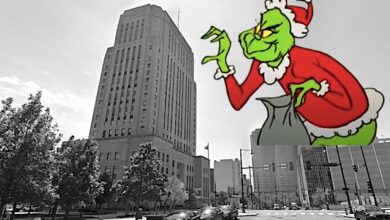Rising demand and record inflation drive crisis for food banks nationwide
Rising inflation and increasing demand are squeezing food banks across the nation.
“We own a fleet of semis,” says Mike Hoffman, inventory and logistics director at Midwest Food Bank, a Christian charity that supplies more than 2,000 churches, nonprofits and community centers across the country. “Fuel prices have taken a toll. We’ve gone through our entire year’s fuel budget in the first five months.”
Closer to home, at the ICNA Relief Food Pantry in Raytown, 100 new families have registered to receive the organization’s services in just the past month.
A recent survey by the anti-hunger organization Feeding America showed that increased demand has affected nearly 80 percent of U.S. food banks as higher prices cause more families to seek assistance. And although President Joe Biden recently signed the Keep Kids Fed Act, extending free meal programs for schoolchildren, many stopgaps funded during the pandemic have ended or are available only in some states.
“For the households that were already food insecure in 2020, nearly half of those reported using a food pantry,” said Jordan Teague, interim director for policy analysis and coalition building at Bread for the World. “Now more people are facing the crisis. We’re all sort of feeling that pinch, and government programs are coming to an end.”
Since the 1980s, the USDA has donated surplus commodities it buys to stabilize farm prices to the Charitable Food Assistance System, a network of food banks. For four years, the Trump administration bolstered the program to offset the cost of its tariff increases, raising the share of the USDA’s contributions to as much as 15 percent of some food banks’ supplies. Those resources, too, now have tailed off.
“We saw a real increase even before the pandemic hit in those USDA commodities and, obviously, during the pandemic, USDA made more commodities available as well,” said Celia Cole, CEO of Feeding Texas. “Now, without them, we’re seeing a drop-off.”
Food banks are looking more than ever to make up the gaps with private monetary donations and government financial assistance. “For every dollar donated to a food bank, we can stretch it to four meals,” Cole said. “We encourage people to be educated with their elected officials in support of hunger-fighting programs like SNAP and the Child Nutrition Programs.”
Hoffman at the Midwest Food Bank said prayer is another life raft for anti-hunger operations. “We have a lot of prayer warriors,” he said. “The faith community is a huge part of what we do, and many churches pray for us. The Bible says, ‘The poor you’ll have with you always,’ so we know we have a job that needs to be done, and we’ll keep getting it done.”
–Dwight Widaman | Metro Voice







